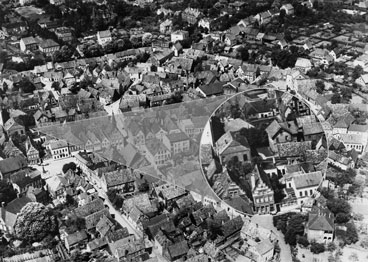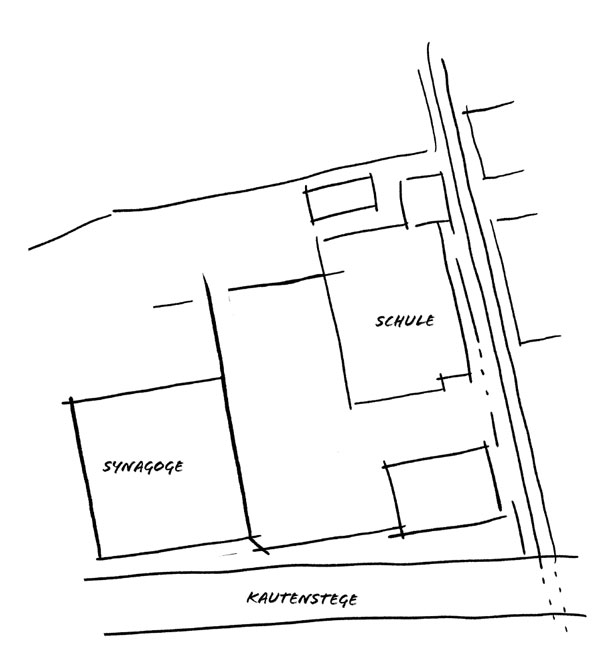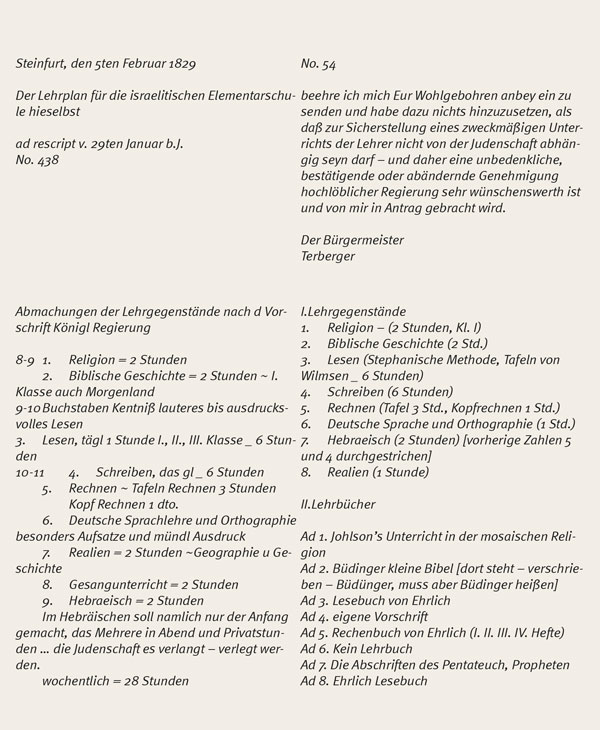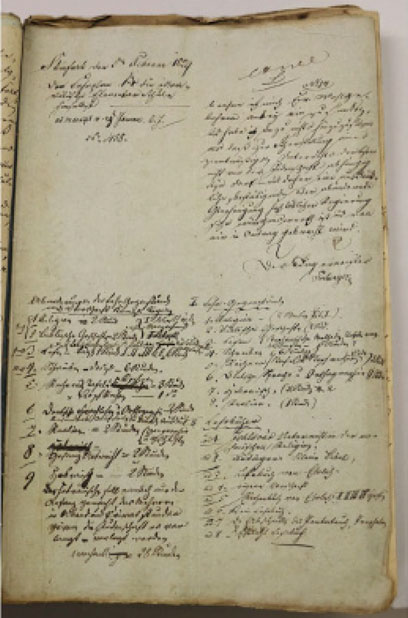The Jewish school, Burgsteinfurt
The Jewish school in Burgsteinfurt is one of the oldest Jewish schools in Westphalia.
Continue
here
From religious to
elementary school
The Jewish community founded a religious school as early as the mid-18th century that taught the fundamentals of the Jewish faith and the Hebrew language in accordance with the traditional educational canon. Classes were initially held in private rooms, from 1764 in the synagogue’s classroom, and from 1888 in the school’s own building.
After compulsory schooling was introduced for Jewish children, too, the religious school was transformed into a private elementary school in 1829, where German (writing and reading, grammar and orthography), blackboard and mental arithmetic, science, and singing were also taught.
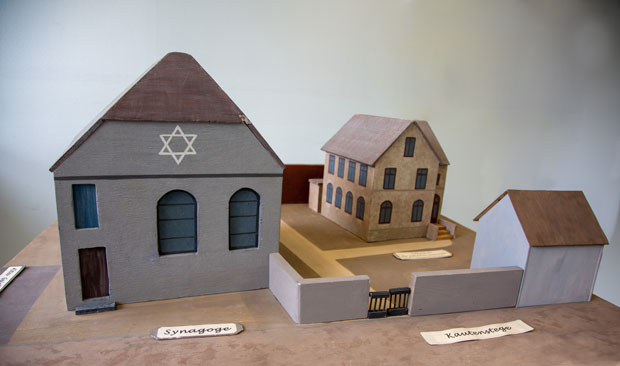
Model of the school with the synagogue, loaned by the Burgsteinfurt local history society
Model of the school
The model of the Jewish school was built from memory by the artist Willi Fiege in 2004 for an exhibition on Jewish life in northern Germany. As a 13-year-old, he had witnessed the night of the pogrom in Burgsteinfurt. Dating from 1888, the school building now has a light-coloured plaster covering the original yellowish bricks from Burgsteinfurt’s Gottsky brickyard.
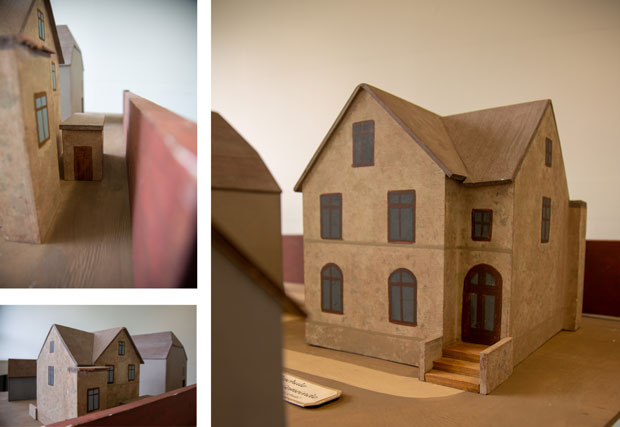
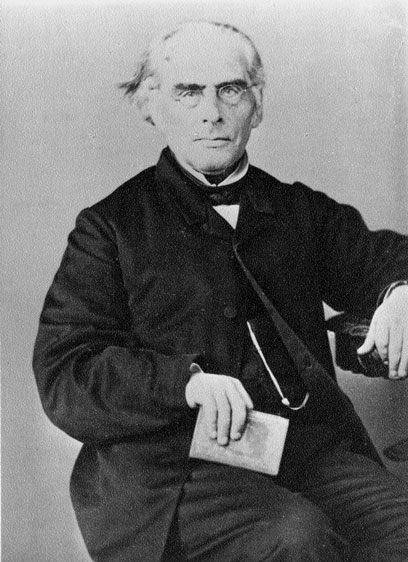
Elias Marcus
(1808–1893)
Elias Marcus was the first teacher at the new Jewish elementary school. Born and growing up in Burgsteinfurt, he attended the Protestant elementary school as a child as well as the Jewish religious school. He was then taught as a private pupil in several foreign languages, and in German, mathematics, geography and physics. He successfully completed his training as a teacher and cantor at the reform-oriented Marks-Haindorf Foundation, a progressive seminary for teachers in Münster.
His leadership greatly helped the Jewish school to flourish, the school inspectors praising the school’s educational work. In February 1840, the authorities wrote:
“We were pleased to hear that good progress is being made in all subjects in the school of the Jewish community in Burgsteinfurt, and that the teacher Marcus distinguishes himself advantageously both in his office administration and in his commendable endeavour to educate himself further”.
The school was granted the status of a public educational institution by the Ministry of the Interior in Berlin as early as 1841. Elias Marcus gave Jewish and Christian children private lessons in English and French, and he produced texts, e.g. a Hebrew and English grammar. Elias Marcus resigned from his post and left Burgsteinfurt in the autumn of 1851, moving to Amsterdam, where he worked as a teacher and published on literary subjects. He returned at the age of 70 to Burgsteinfurt, where he died on 1 December 1893.
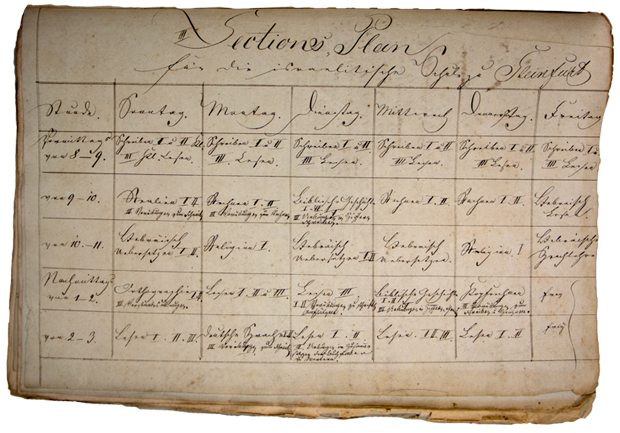
the specifications of the Royal Prussian Government in Münster;
Steinfurt municipal archives
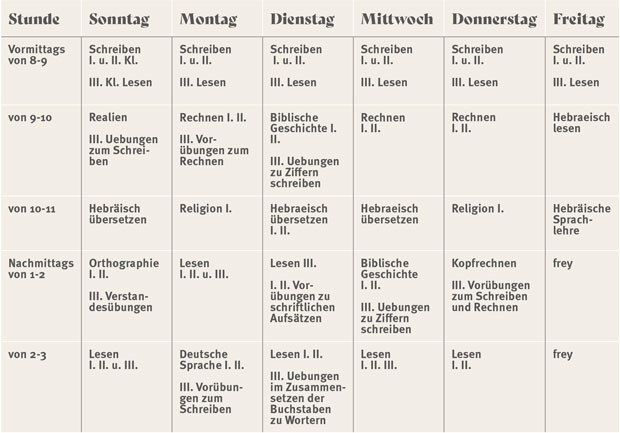
Idea and text: Irmgard Walbaum
Coordination: Nina Nolte
Photos: Andreas Wessendorf, Vanessa Dartmann
Sources: Steinfurt municipal archives
The texts draw on writings by Willi Feld:
Willi Feld: “… daß die hiesigen Juden für Steinfurt wichtig sind” – Die Juden in der Geschichte der ehemaligen Stadt Burgsteinfurt – 2nd revised edition, Berlin 2009.
Willi Feld: Lebensbilder – Die Juden in der ehemaligen Stadt Burgsteinfurt, Part II, Münster 2004.
